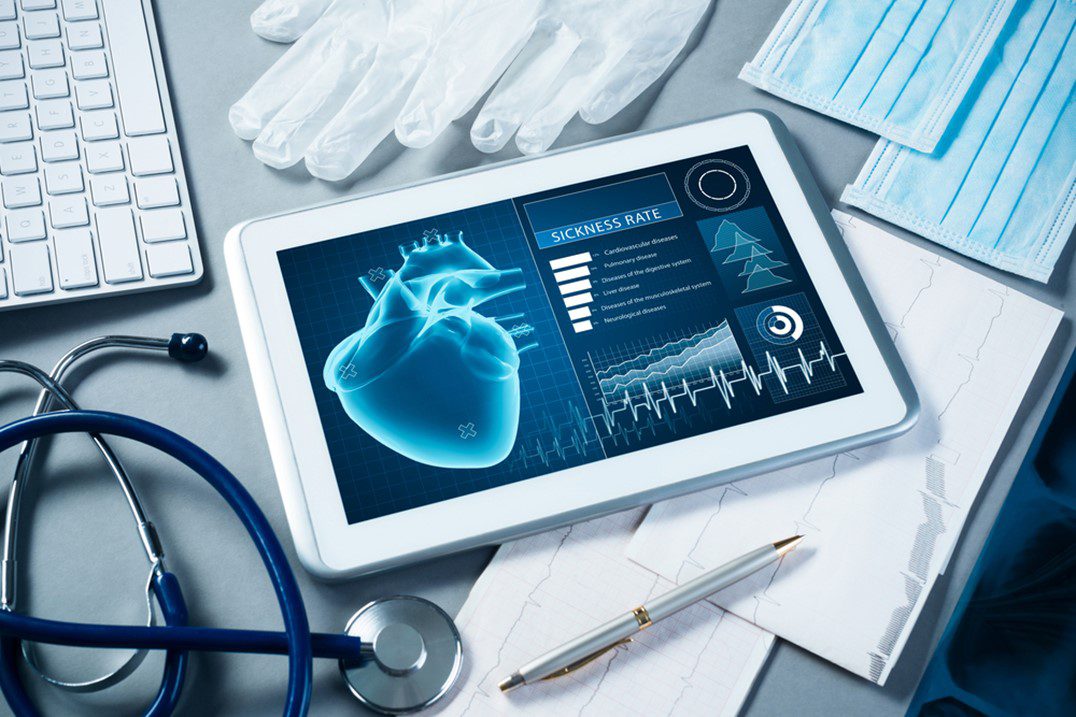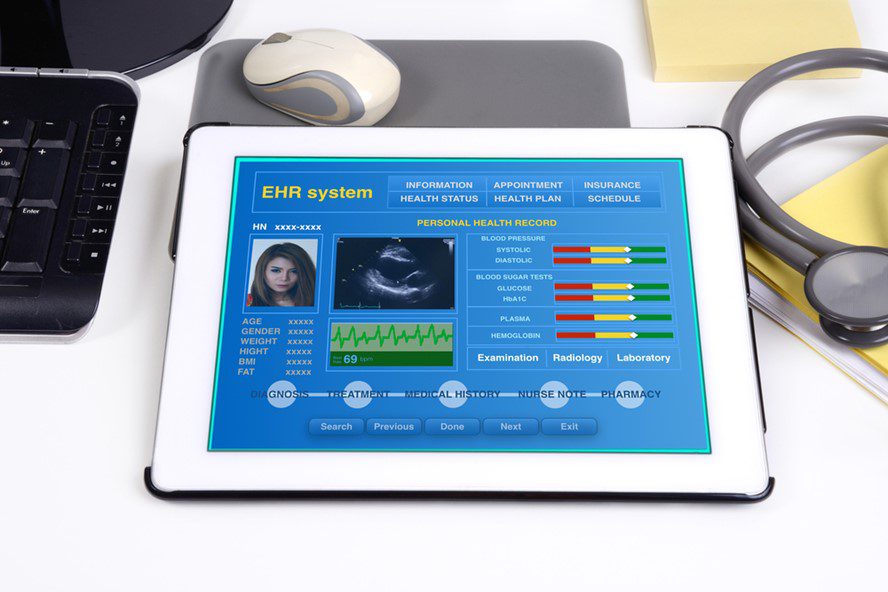Healthcare Technology Trends Improving Patient Outcomes

Technology is infiltrating every aspect of healthcare, from how doctors store records to how they make decisions about patient care. This inclusion of technology has helped improve patient outcomes by allowing physicians greater insights and providing patients with better treatment options.
We should welcome every new innovative technology that healthcare providers use, as it is almost certain to improve patient experience and outcomes. Here are a few of the latest innovations in healthcare technology and how they are being used to benefit those most vulnerable in the healthcare system.
Telehealth
Telehealth has dominated healthcare industry news for more than a year, and its dominance is likely to be the lasting legacy of the coronavirus pandemic. To reduce potential exposure to the virus, much of the population has kept away from physical healthcare facilities, like doctor’s offices and hospitals, and fortunately, telehealth solutions rapidly became more widely available to patients in need of medical care.
Telehealth has been invaluable during the pandemic, but the widespread use of this technology has resulted in positive implications beyond COVID-19. In particular, the looming threat of healthcare deserts in rural communities could be reduced significantly by broader access to telehealth. Thanks to telehealth services, more patients — especially patients lower on the socioeconomic spectrum — are able to gain reliable access to healthcare, improving their ability to be diagnosed and treated.
Internet of Things
The medical Internet of Things (IoT) is beginning to show promise. By merging sensors used for collecting health data with practical tools patients want to and are able to use, the healthcare industry has more opportunities to gather medical data that is useful in diagnosis and treatment. Even better, compared to traditional methods of data collection, IoT can help reduce costs for patients and providers.
The medical IoT field is growing, but it isn’t accessible to everyone yet. For now, providers interested in offering IoT solutions need to consider what needs to be done to ensure the security of their data, which is paramount for the type of sensitive patient data healthcare providers store. Additionally, providers and patients need to be certain of the stability of their internet connections, as disruptions might result in them being unable to treat patients at certain times due to their inability to access accurate and complete data.
Electronic Health Records

Thanks to the Affordable Care Act, healthcare providers have been pushed toward implementing electronic health records — which has radically improved patient care. Electronic health records ensure that patients’ health data remains up to date; they allow different health providers to share patient information quickly and easily, and they reduce costs associated with storing and managing physical files. Though transitioning to electronic health records can be difficult for healthcare facilities, the process is becoming essential as we move further into the digital age.
The sooner a healthcare facility migrates its patient data into an electronic health system, the better. Before making the shift to electronic health records, members of the healthcare industry might find it useful to take healthcare management courses to address administrative skills for leading a healthcare organization through times of disruption and improve quality and safety for patients and providers alike.
Virtual Reality and Augmented Reality
VR and AR are working to revolutionize healthcare, from how doctors and nurses are trained to how patients receive care. Currently, an increasing number of medical schools are using virtual reality programs to help clinicians gain experience with different types of patients and procedures. VR and AR are also being used among patients, helping them understand and become comfortable with certain procedures.
A number of VR and AR companies are working to develop new applications for the technologies in healthcare. Though virtual doctors will never replace real doctors, virtual reality could provide several benefits to healthcare.
We are fortunate to live in an age where healthcare is saturated with technology. Technology is improving patient outcomes, and it will continue to do so as researchers find new applications for old and emerging devices and systems.
Technology is infiltrating every aspect of healthcare, from how doctors store records to how they make decisions about patient care. This inclusion of technology has helped improve patient outcomes by allowing physicians greater insights and providing patients with better treatment options.
We should welcome every new innovative technology that healthcare providers use, as it is almost certain to improve patient experience and outcomes. Here are a few of the latest innovations in healthcare technology and how they are being used to benefit those most vulnerable in the healthcare system.
Telehealth
Telehealth has dominated healthcare industry news for more than a year, and its dominance is likely to be the lasting legacy of the coronavirus pandemic. To reduce potential exposure to the virus, much of the population has kept away from physical healthcare facilities, like doctor’s offices and hospitals, and fortunately, telehealth solutions rapidly became more widely available to patients in need of medical care.
Telehealth has been invaluable during the pandemic, but the widespread use of this technology has resulted in positive implications beyond COVID-19. In particular, the looming threat of healthcare deserts in rural communities could be reduced significantly by broader access to telehealth. Thanks to telehealth services, more patients — especially patients lower on the socioeconomic spectrum — are able to gain reliable access to healthcare, improving their ability to be diagnosed and treated.
Internet of Things
The medical Internet of Things (IoT) is beginning to show promise. By merging sensors used for collecting health data with practical tools patients want to and are able to use, the healthcare industry has more opportunities to gather medical data that is useful in diagnosis and treatment. Even better, compared to traditional methods of data collection, IoT can help reduce costs for patients and providers.
The medical IoT field is growing, but it isn’t accessible to everyone yet. For now, providers interested in offering IoT solutions need to consider what needs to be done to ensure the security of their data, which is paramount for the type of sensitive patient data healthcare providers store. Additionally, providers and patients need to be certain of the stability of their internet connections, as disruptions might result in them being unable to treat patients at certain times due to their inability to access accurate and complete data.
Electronic Health Records
Thanks to the Affordable Care Act, healthcare providers have been pushed toward implementing electronic health records — which has radically improved patient care. Electronic health records ensure that patients’ health data remains up to date; they allow different health providers to share patient information quickly and easily, and they reduce costs associated with storing and managing physical files. Though transitioning to electronic health records can be difficult for healthcare facilities, the process is becoming essential as we move further into the digital age.
The sooner a healthcare facility migrates its patient data into an electronic health system, the better. Before making the shift to electronic health records, members of the healthcare industry might find it useful to take healthcare management courses to address administrative skills for leading a healthcare organization through times of disruption and improve quality and safety for patients and providers alike.
Virtual Reality and Augmented Reality
VR and AR are working to revolutionize healthcare, from how doctors and nurses are trained to how patients receive care. Currently, an increasing number of medical schools are using virtual reality programs to help clinicians gain experience with different types of patients and procedures. VR and AR are also being used among patients, helping them understand and become comfortable with certain procedures.
A number of VR and AR companies are working to develop new applications for the technologies in healthcare. Though virtual doctors will never replace real doctors, virtual reality could provide several benefits to healthcare.
We are fortunate to live in an age where healthcare is saturated with technology. Technology is improving patient outcomes, and it will continue to do so as researchers find new applications for old and emerging devices and systems.
This article has been published in accordance with Socialnomics’ disclosure policy.









